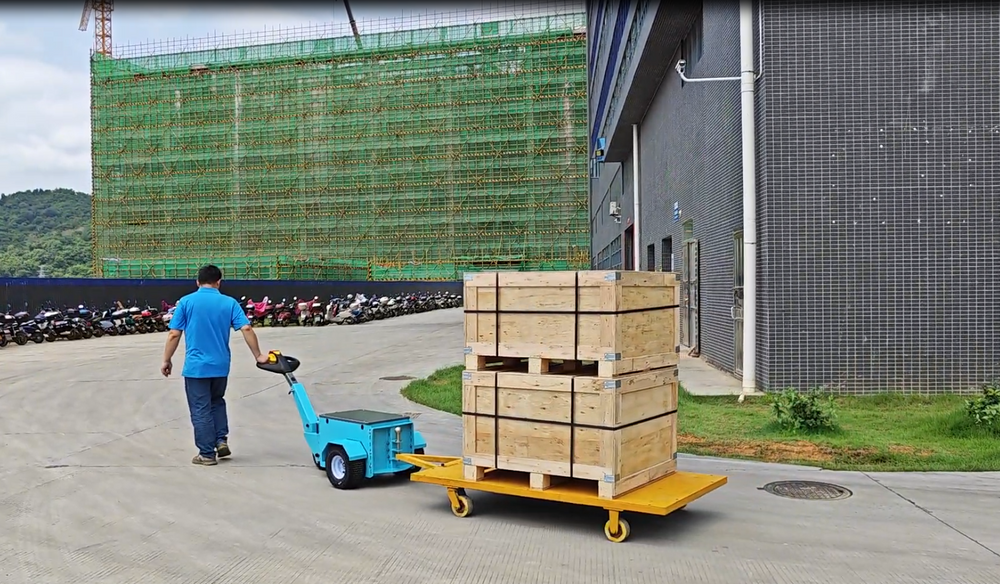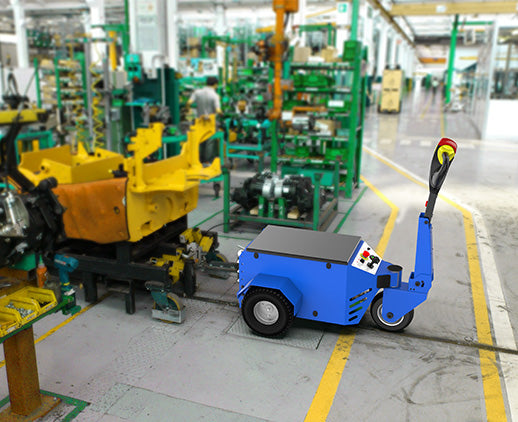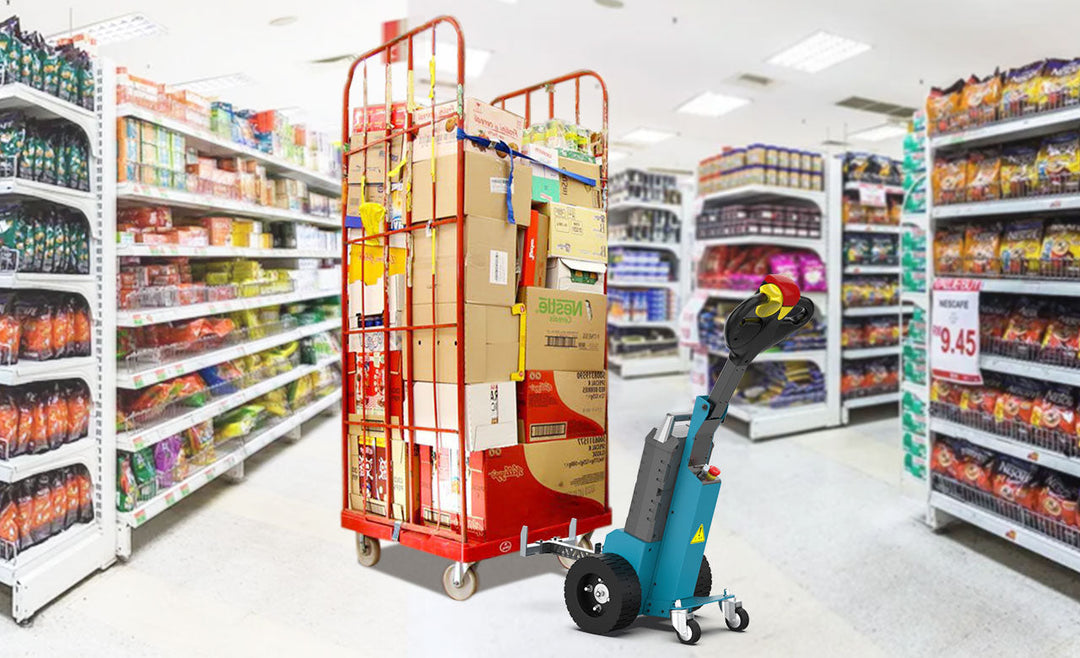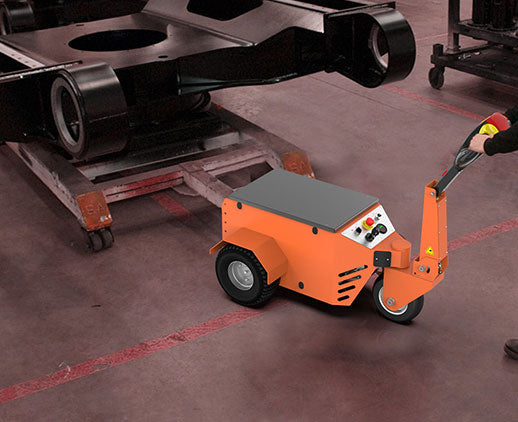Why electric tugs outperform diesel alternatives
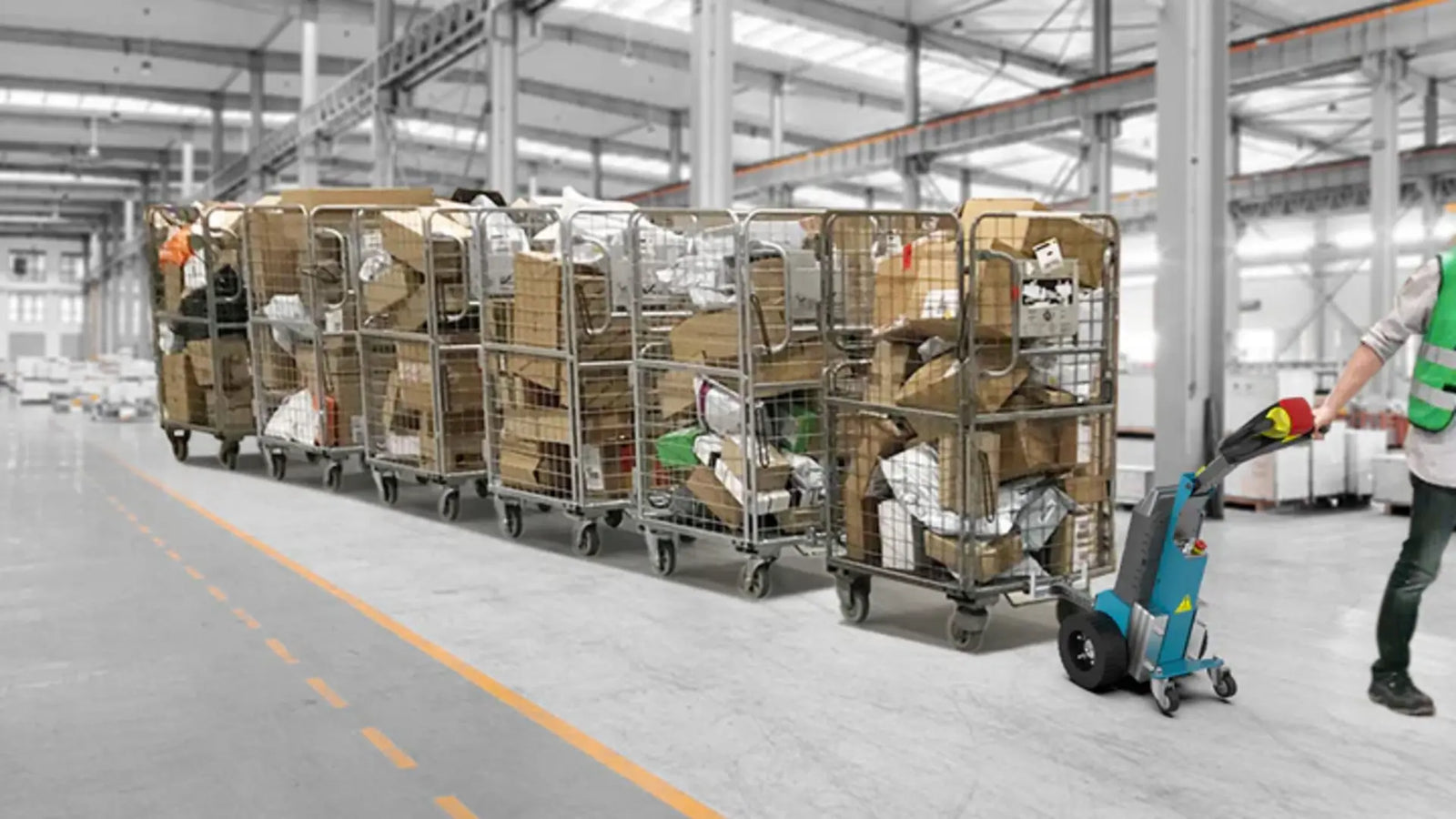
Electric Tugs are obviously the better option because of zero emissions, lower maintenance costs, and higher energy efficiency. For example, it said that electric tugs might help reduce CO2 emissions by 35% while their maintenance overheads would be up to 40% less than those of diesel tugs, allowing for better returns and a longer life.
Eco-friendly benefits
Electric tuggers have been widely accepted to be highly efficient environmentally and sustainable compared to diesel. In practice, electric tuggers help to keep emissions almost at zero level and therefore contribute significantly towards ambient air quality improvement and carbon footprint reduction. Taking a typical high-volume logistics company, for example, with an electric tractor fleet in operation, the company's CO2 emissions have been cut in the order of at least 35%. Industry analysis has shown that electric tuggers emit on average in excess of 70% less than any intern combustion engine tuggers.
I remember doing a warehouse and logistics project in which we changed out 40 diesel tuggers for a customer. The updated data later showed that annual costs on fuel consumption were brought down by around $48,000 while greenhouse gas emissions fell by 36 tons (like emissions of 15 passenger cars in a year). This is all because of electric tuggers that otherwise have greater energy conversion efficiency. Electric motors have much higher energy efficiency than diesel internal combustion engines; we say electric tuggers have energy efficiency greater than 85%, while diesel trucks usually have only 25-30% efficiency.
Lower operating costs
Having a lot of exposure to electric tuggers where there has been save on their use expenditure, I was as doubtful at the beginning as most in the industry regarding how much seed money would cost into electric tuggers; given the notion that the technology is not yet mature. But as technologies brought a shift and changes in market trends began to unfold, these savings from electric tuggers were an eye-opener for me. Let us now look at how electric tuggers fare financially against diesel tuggers.
First, the energy costs for electric tuggers are much lower than for diesel tuggers. The industry estimated that the energy costs for electric tuggers in 2023 would be about 30 percent of the values intended for diesel tuggers costs (ISO 50001:2018). A good example for this would be in a pilot project at a port where our company saved over $3000 or 22,000 yuan in fuel costs for each electric tractor instead of diesel tuggers. High-frequency use areas tend to magnify these savings. Electric tuggers will consume approximately 1-1.5 kWh electric energy an hour, while diesel tuggers on an average will consume anywhere from 8 to 12 liters of diesel fuel an hour, leading to the assumption that energy cost per hour will, therefore, range from $0.2 to $0.3 or 1.4 to 2.1 yuan. By considering average hours of operation to utilize the equipment, annual energy costs saved by electric tuggers can be between 20 and 40 percent.
Take note, too, that much of the expense of electric tractor maintenance is orders of magnitude lower than that of corresponding diesel tuggers. It is easy to determine high maintenance costs when taking into account the internal combustion engines of diesel tuggers that are having complex constructions and frequent component replacements. As an example, oil and filter changes for diesel engines are performed every 5,000 hours, an overhaul is done every two years, and maintenance costs are generally prohibitive. Electric tuggers' battery systems and motors may have an operational life of about 5-8 years with a low failure rate as a result of the electric system. In the 2022 report by the big logistics company, electric tuggers' average yearly maintenance cost was roughly 45 percent less than that of diesel tuggers. Personally, I have had to incur costs of about $2,000 replacing batteries in an electric tractor, while maintenance on a diesel tractor would have cost upward of an extra 50% during that same period.
Additionally, electric tuggers emit considerably less carbon than diesel ones. In this atmosphere of growing regulations focusing on environmental protection, carbon emission cost is an expense that cannot simply be neglected. Policy introduction concerning charging carbon emissions became popular everywhere in the world as of 2023. For example, an EU carbon tax on emissions entered into force in 2023 and increased operating costs for diesel tuggers by about 15%. In other words, environmental conservation was a double hit for diesel tuggers: increased constraints on energy consumption had their costs compounded by rises due to carbon emissions into much higher operational expenses. Electric tuggers are exempt from such taxes and meet the zero-emission requirements. It is also available through government subsidies to companies, thanks to the policies. In summary, that means electric tuggers will have a much better long-run economic outlook than their diesel counterparts due to all these factors.
Analyzing from an ROI standpoint, electric tuggers provide considerable returns on investment to companies via savings in fuel, maintenance, and carbon emission costs. Based on a logistics project I was involved in, there was more than a 30% reduction in equipment total lifecycle costs after going electric, and ROI went up by 40% after 2 years. From calculated observations, we have found that TCO of electric tuggers is almost 25% lesser than diesel tuggers, the energy and maintenance savings account for TCO reduction to the extent of more than 70%.
My communication with equipment managers of several logistics companies led me to learn that the switch from diesel to electrical tuggers improved runtime of their equipment considerably and drastically reduced failure rates. For instance, one logistics company brought down the failure rates of the electric tuggers to an average of 5% from 12% of diesel vehicles in just one year, while the average annual maintenance times for the equipment fell by 55%. This data not only proves the efficiency of electric tuggers but also strengthens its further claim as a vehicle with lesser operating costs.
Resuming benefits, the low operational cost of electric tuggers is not only a matter of saved energy consumption but goes much farther in comparison with several advantages with regard to maintenance, carbon emission policies, and long-term costs associated with operations. A low-cost and high-efficiency model of operation is one of the vital parameters making the complete transition of electric tuggers to reach the mainstream of this industry from diesel tuggers.
Reduced Noise Pollution
Over the years, I have been a witness to the look and feel of changes electric tuggers have brought in reducing the hassles of noise pollution within the practice of years of work in some field of transport equipment. These zero-emission vehicles basically represented as electric tuggers are able to fill the field of efficiency and environment with their unmatched performances in the field of noise control as compared with the traditional diesel tuggers. Industry sources said that generally, the noise levels of electric tuggers are between 60 and 65 decibels lower than those of traditional diesel models above 80 decibels and in some instances even above 90 decibels for some heavy tuggers. The difference would be enough to bring about significant changes in densely populated urban areas.
I've been tracking a logistics company. After this company replaced diesel vehicles with a batch of electric tuggers, a very intuitive response emanated from the employees. Previously, more than one person in the warehouse operation area was deafened by the roar of diesel vehicles. But with the advent of electric tuggers into the environment, the noise exposure time of staff was significantly reduced. According to statistics, overall employee health complaints were down by 27% and much more was seen to improve as the comfortable operating efficiency in which they worked-with-a-factor-we of-did-not-place-often-real.attention-to-reality improved, that is actually a factor that we often.ignore in reality. They consider noise pollution not only an irritant to health but an influencing factor for the team work efficiency as well.
From the equipment standpoint, it is designed without mechanical transmission that makes electric tuggers low noise. Application work shows that effective motors and proper battery management systems would keep electric tuggers well within the acceptable noise range during working conditions. For instance, when installed with an electric tractor system, the noise level under load does not exceed 60 decibels (an equivalent of normal conversations) because this type of noise is above industry practice. It should be effective in warehouses and airports where noise levels are sensitive.
So not only do electric tuggers create a less noisy environment, but they will also yield certain economic benefits from it. For example, during the actual operations in a port, the port was able to reduce the surrounding noise pollution by 35% by using electric tuggers; and in long periods of operation, it has reduced up to 23% costs regarding noise pollution control. More important, the less noisy environment enhances safety and comfort due to night work. And eventually, such data prove that the low noise advantage of electric tuggers brings improvement in the working environment quality and brings actual economic returns as well.
Industry standard ISO 3744:2010 has defined the noise level below 70 decibels for the equipment to be included in the realm of operating equipment for urban transportation. Electric tuggers far exceed this requirement because of their optimized designs and qualified use of materials, making them even more competitive in the marketplace for the reason. Personally, I have come to realize quite deeply that electric tuggers are not only at the forefront in promoting environment-friendly measures and technological innovations, but are also gradually shaping the quality of the working environment that much more.
No Exhaust Emissions
From the standpoint of equipment operation and environmental management, I can only admire how electric tuggers rate in zero-emission operations. Diesel tuggers have been releasing tons of CO2, nitric oxides, and other harmful gases into the atmosphere every year, contributing to making them prime culprits of environmental pollution and the trigger for increasingly stringent vehicular emissions standards by local authorities. Electric tuggers are fully electric ones, which means that they do not emit any tailpipe emissions and are therefore, climatically really good for air quality work.
In my works with quite big logistics enterprises, I have seen the environmental benefits of this zero-emission technology in operation. For example, according to a well-known international logistics company (i.e., UPS), this year, the company plans to raise its electric tractor share to 40% and thereby reduce CO2 emissions by more than 2,000 tons per year. This data indicates the environmental contribution electric tuggers impart throughout the world, especially in densely populated urban areas, where they are able to nearly avoid all exhaust pollution typical of traditional vehicles.
The zero-emission advantages of electric tuggers lie in the efficiency of the electric motors and battery packs employed. The usual power ratings for electric tuggers span from 150 to 350 kw, and their drive systems nearly escape the exhaust emission constraints that plague traditional internal combustion engines. In contrast, diesel tuggers are usually subject to emission norms quite similar to the Euro VI standard, which places about 2.5 kg of CO2 into the atmosphere per kilometer. And the costs to the environment and health arising from these numbers are staggering.
Additionally, the zero-emission working mode of electric tuggers would also help companies cut costs for environmental governance. In one particular case, an airline found that the procurement cost for fuel dropped by 18% after switching ground handling to electric tuggers, while expenditures towards environmental protection gadgets required to comply with the emission standards saw a big cut. The win-win outcome of environmental regulations and cost savings achieved by the company exists inside this overall realignment of equipment and transport strategy.
It should also be noted that the zero-emission character of the electric tuggers is not simply a theoretical consideration. As per the ISO 14001:2015 environmental management system standard, companies can carry out corresponding environmental certification based on the respective lowering of environmental loads in promoting zero-emission vehicles. This certification manifests a greater green image for the company and maximizes on the added score in the bidding procedure, thus boosting company competitiveness.
With my own personal experience, it can be said that the zero-emission properties of electric tuggers are great practical instruments toward any environmental protection initiative of the industry. Going by government policy considerations or corporate operation costs, electric tuggers are a critical technology in regard to present and future environmental governance.
Longer lifespan
In the life expectancy realm, electric tuggers are significantly favored over internal-combustion-engine (ICE) tuggers for some reason. First, from the perspective of the power system, batteries and motors in an electric tractor would enjoy a longer life than a conventional ICE. As part of my work experience, I was involved in maintenance planning for groups of electric tuggers used by a large logistics company and I observed that the battery system decay rate was much less than the failure rate of internal combustion engines. On average, the batteries of electric tuggers can hold up to 5,000 to 7,000 charge and discharge cycles-this can be compared to engines of traditional internal combustion vehicles, which need to be replaced after about every 10,000 hours working cycle especially under high-intensity use-thus enjoying a longer lifespan with reduced maintenance.
The life of equipment is, on the other hand, greatly enhanced due to the combination of the transmission system with the battery management system (BMS) of electric tuggers. Using one particular international brand of electric tuggers as an example, the design life of the motor is more than 15,000 hours against only 6,000 hours of traditional diesel tuggers. We also found that the battery management system for electric tuggers serves to limit the overcharging and over-discharging risk of the batteries, which also helps enhance the service life of the batteries. Thanks to such optimizations taken, the life cycle cost (LCC) of electric tuggers is distinctly lower than that of traditional diesel vehicles and an estimated average maintenance cost saving of about 30% is achieved.
A classic industry case is where a well-known domestic logistics company replaced its traditional diesel tuggers with electric tuggers in 2021. After 12 months of operation, the average failure rate of electric tuggers decreased by 28%, equipment life increased by 15%, and the number of charge and discharge cycles of the batteries reached 120% of the design standard. These numbers clearly indicate the reliability of electric tuggers from long-term use.
This improvement is not only reflected in the hardware, but intelligent systems of electric tuggers (such as vehicle health monitoring, fault warning systems, etc.) also augment the service life of the equipment. Real-time monitoring and regular checks of equipment are indicated in 2023 ISO 9001:2015 clause 7.1.3 requirements, and the system design of the electric tuggers caters to this requirement.
Less maintenance required
One of the biggest advantages of electric tuggers is that they have a drastically reduced maintenance schedule compared to diesel tuggers. In other words, while the diesel tuggers are often subject to oil line inspections and engine repairs, these do not happen that often in electric tuggers. The maintenance cycle for electric tuggers is reduced to about a third of the diesel tractor maintenance matrix, according to my field observations at a logistics park. Though quite energetic, in their functioning, they mainly carry fewer components like batteries, electric motors, and drive systems, thus reducing wear and less maintenance.
Technically, on the electric tractor, it can be said that the electric motor is designed employing a direct-drive system (direct drive). This reduces the very vulnerable parts such as gearbox and clutch in contrast to a combustion engine. This reduces, in turn, maintenance costs for electric tuggers. From statistical data, on average-diesel tuggers incur maintenance costs of about 200 hours; electric tuggers, in turn, about 50 hours. It also gives us a sense of relative lifetime costs of electric tuggers in operations and maintenance compared to internal combustion tuggers. For return on investment, the maintenance cost of electric tuggers is about 35% lower than that of diesel-powered tuggers, which has a lot of advantages in operational efficiency and return on assets.
I also carefully observed the performance of electric tuggers under high-intensity working conditions. Intensive high-frequency usages day and night were launched by a large warehousing and logistics company over electric tuggers during 2022. Likewise, over the whole exercise, electric tuggers showed a daily failure rate of only 1-2 occurrences, whereas conventional diesel tuggers had a failure rate exceeding that of electric ones by more than twofold. Especially under prolonged heavy loads, the diesel tuggers are more likely to suffer overheating of the engine or blockage of the oil line, which not only increases the frequency of maintenance but also escalates the cost of maintenance.
Maintenance-wise, diesel tuggers are, on the overall market, much more troublesome compared to electric tuggers. A well-known logistics company had the maintenance records of electric and diesel tuggers considered for 3 years, during which it claimed an average of some 40% decrease in maintenance due to electric tuggers in maintenance costs yearly and some 20% decrease in maintenance cycles. This low maintenance requirement makes electric tuggers the first choice for more and more companies seeking low operating costs and improved efficiency.
From the above industry developments, it is not difficult to see that electric tuggers not only meet the technical requirements of low failure rates; they also afford tangible economic benefits to companies. Electric tuggers, because of their highly streamlined power system and efficient management system, according to the requisite provisions of the ISO 9001:2015 standard for equipment maintenance, minimize equipment downtime and maintenance cost in day-to-day operations.




